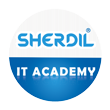Course Outline
LINUX PREREQUISITES:
- Basic network knowledge required like what is IP, Port, and Firewall.
- Basic information of what are the hardware components of the server, computer, and laptop.
- Basic information about Virtual Machines and last but not least passion to learn Linux.
THEORETICAL & FUNDAMENTAL CONCEPTS
- Objectives and Introduction to the course and instructor
- Introduction to Linux
- Introduction to linux distributions
- The benefits of Linux
- List of essential commands of linux
LINUX DIRECTORY STRUCTURE
- Understanding Linux file system hierarchy
- Navigating to different directories
- Ways of using ls in linux
- Cp file/directory from one location to another
- Mv file/directory from one location to another
- Deleting file/directory
- Finding files command
- Archiving files with tar
- Managing file compression
- Using Wildcard
LINUX TEXT EDITORS
- List of text editors in linux
- Understanding vi
- Understanding difference between vi and vim
- Creating text file with vi/vim
- Browse the files with help of more and less
- Command to see start and end of the file
- Command to display file content
- Usage of grep
- Examples of grep command
USER & GROUP MANAGEMENT
- Understanding Users
- Understanding importance of root user and its vulnerability
- Enabling root user and disabling root user
- Using of su
- Using sudo
- Using ssh to connect to a remote user
- Creating random user
- Delete random user
- Navigating random user’s directory
- Updating random user password
- Understanding file ownership
- Command to create groups
- Adding user to any group
- Giving ownership to a file or directory
- Checking user properties
- Making user a sudo user
- Understanding user and group configuration files
LINUX DIRECTORY STRUCTURE
- Understanding basic linux permissions
- Commands to manage basic linux permissions
STORAGE MANAGEMENT
- Understanding Linux storage management
- Creating MBR and GPT partitions
- Creating filesystem and mounting filesystems
- Understanding swap and adding swap partition
- Working with fstab configuration file
MANAGING SSH SERVICES
- Understanding of SSH
- Configuring and Enabling SSH service
- Creating SSH keys
- Using Public/Private SSH keys
- Command to copy files to remote server
- Synchronization of directory
FTP AND SFTP SERVICES
- Understanding of FTP and SFTP
- Configuring FTP and SFTP
READING LOG FILES
- Understanding linux logging
PROCESS MANAGEMENT
- Understanding of process management
- Tools to monitor processes
- Monitoring process properties with ps
- Process Kill
There are no items in the curriculum yet.
